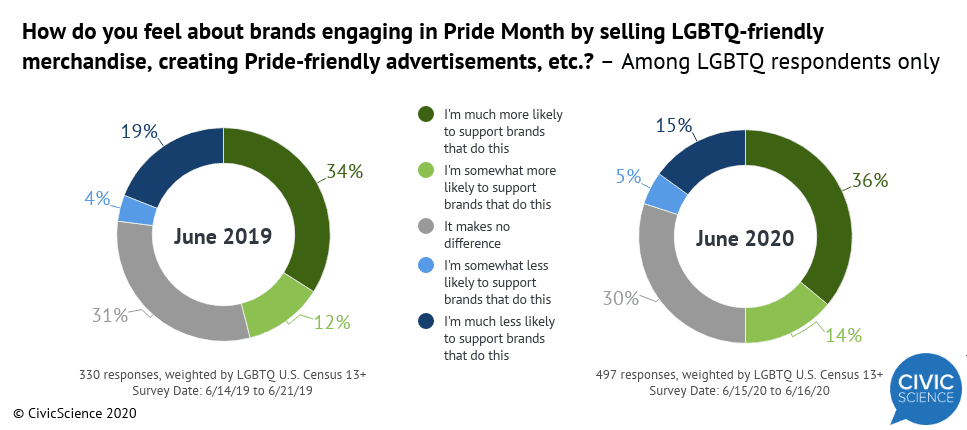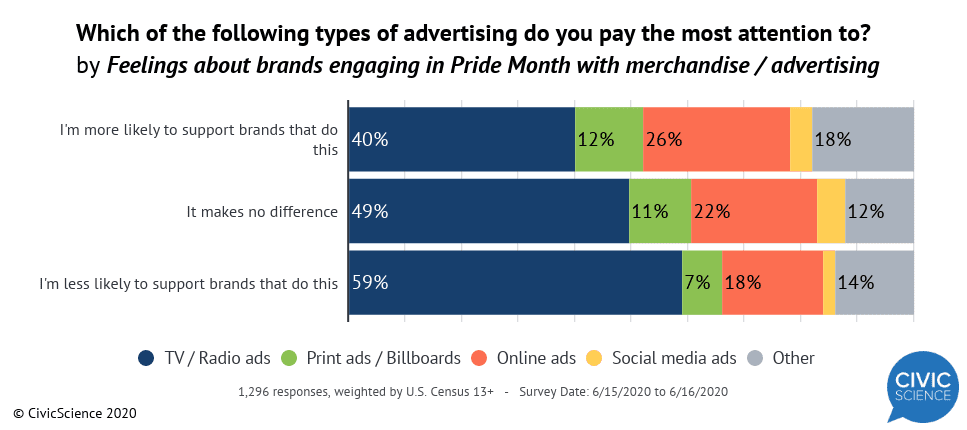According to the latest year-over-year data from CivicScience, general public opinion about Pride Month marketing appears to have shifted.
In a June survey of more than 2,500 Americans (ages 13+), 35% of respondents said they are more likely to support brands that sell LGBTQ-friendly merchandise and / or create Pride-friendly advertisements. That’s up substantially from the 24% of Americans who said the same in June 2019.
Interestingly, those who identified themselves as LGBTQ individuals became only slightly likelier to say they would be more likely to support brands that engage in Pride marketing (46% in 2019 to 50% in 2020). Still, this figure remains higher among LGBTQ individuals (50%) than among the general population (35%) in 2020.
On the other hand, though, the percentage of LGBTQ individuals who say they would be less likely to support brands that engage in Pride marketing is now roughly even with that of the Gen Pop (both at 20%). This suggests that, while most LGBTQ individuals are either supportive of or indifferent to Pride marketing, a certain portion of the LGBTQ population remains unwavering in its opposition to the practice.
Brands’ decisions on whether to run Pride-friendly advertisements could also hinge on the medium they’re advertising on. Those who do not support Pride marketing, for example, are more likely than others to pay the most attention to TV and radio ads — and they’re less likely than others to pay the most attention to ads online or on social media.
While overall support for Pride marketing from brands has increased significantly year-over-year, there are still some subsets of consumers — including among the LGBTQ population — who say such marketing would make them less likely to support a brand.











